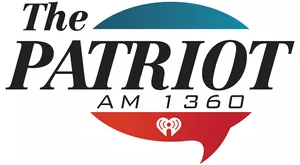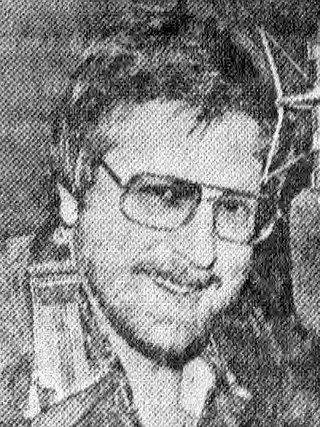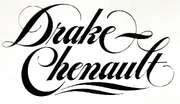
CKLW is a commercial radio station in Windsor, Ontario, serving Southwestern Ontario and Metro Detroit. CKLW is owned by Bell Media and has a news/talk radio format. It features local hosts in morning and afternoon drive times, with syndicated Canadian hosts in middays and evenings, plus Coast to Coast AM with George Noory overnight. Evening newscasts are simulcast from CHWI-DT Channel 16 CTV Windsor.
KHJ is a commercial AM radio station that is licensed to Los Angeles, California. Owned and operated by Relevant Radio, Inc., the station broadcasts Roman Catholic religious programming as an affiliate of the Relevant Radio network.
Bill Drake, born Philip Yarbrough, was an American radio programmer who co-developed the Boss Radio format with Gene Chenault via their company Drake-Chenault.
Swinging Radio England ("SRE") was a top 40 offshore commercial station billed as the "World's Most Powerful" that operated from 3 May 1966 to 13 November 1966 from a ship in the North Sea, four and a half miles off Frinton-on-Sea, Essex, England. While the station was dubbed a pirate radio station, its operation took place within the law and its offices were in the West End of London. Its representation was by a company formed earlier in the year to represent in Europe the ABC radio and television stations of the United States.
KRTH is a commercial radio station that is licensed to Los Angeles, California, United States and serves the Greater Los Angeles area. The station is owned by Audacy, Inc. and broadcasts a classic hits format. KRTH's studios are located on Wilshire Boulevard in the Miracle Mile district of Los Angeles. The station's signal covers an extremely large area of Southern California due in part to its antenna location on Mt. Wilson. It can be heard as far south as San Diego, as far east as Moreno Valley, as far west as Santa Barbara, and as far north as Barstow. KRTH is the flagship station for the nationally syndicated program Rewind with Gary Bryan.
Contemporary hit radio is a radio format that is common in many countries that focuses on playing current and recurrent popular music as determined by the Top 40 music charts. There are several subcategories, dominantly focusing on rock, pop, or urban music. Used alone, CHR most often refers to the CHR-pop format. The term contemporary hit radio was coined in the early 1980s by Radio & Records magazine to designate Top 40 stations which continued to play hits from all musical genres as pop music splintered into Adult contemporary, Urban contemporary, Contemporary Christian and other formats.

RKO General Inc. was an American broadcasting company that, from 1952 through 1991, served as the main holding company for the noncore businesses of the General Tire and Rubber Company and later on GenCorp. The concern was based around the consolidation of its parent company's broadcasting interests, which dated to 1943 and were brought together under the General Teleradio umbrella in 1952. The company was renamed RKO Teleradio Pictures following its 1955 purchase of the RKO Pictures film studio, and then RKO General in 1959 after dissolving the motion picture division. Headquartered in New York City, the company operated six television stations and more than a dozen major radio stations around North America between 1959 and 1991.

KLSD is a commercial radio station in San Diego, California. It is owned by iHeartMedia and broadcasts a talk format branded "The Patriot AM 1360". The radio studios and offices are on Granite Ridge Drive in the Serra Mesa neighborhood on the northeast side. Nationally syndicated shows heard on KLSD include Glenn Beck, Jesse Kelly, Dana Loesch, Mark Levin, Chad Benson, Red Eye Radio and America in the Morning.

CIDR-FM is a commercial radio station in Windsor, Ontario, Canada, targeting the Detroit–Windsor metropolitan area, with fringe reception into Toledo and Cedar Point/Sandusky in Ohio. It is owned and operated by Bell Media and airs a Top 40/CHR format. The studios and offices are located on Ouellette Avenue in Windsor.

CKWW is a Canadian radio station in Windsor, Ontario. It is owned by Bell Media and airs an oldies format targeted to the Windsor/Detroit market. Most of the playlist is made up of hits from the 1950s, 60s and 70s. The studios and offices are on Ouellette Avenue in Windsor.

Jones Radio Networks & Jones Media Group were branches of Jones International before being sold to Triton Media Group. JRN and JMN provide local radio stations with satellite-delivered formats. They also offer other services to local radio such as news and talk programs, syndicated radio shows, music scheduling, show preparation, and music and sales Research. Jones Media Network also owns many national syndication shows such as Lia, All Night with Danny Wright, The Ed Schultz Show, The Stephanie Miller Show, The Bill Press Show, The Neal Boortz Show, The Clark Howard Show, and A&E Network's Live by Request. Jones Media Networks & Jones Radio Networks own production studios in: New York, NY; Los Angeles; Chicago; Washington, DC; Seattle, WA; Centennial, CO; and Florida. Clark Howard and Neal Boortz are broadcast from the studios of WSB-AM in Atlanta, GA; those shows are produced by Cox Radio. Jones Media Networks reaches about 1.3 billion weekly listeners in radio. In 2006, Jones purchased TM Century, a Dallas-based company providing jingles and production services for radio stations across the country.

Robert Wilbur Morgan was an American radio personality best known for his work at several stations in Los Angeles, California, in particular KHJ-AM.

KSTN (1420 kHz is a commercial AM radio station in Stockton, California, owned by Robert LaRue, and licensed by KSTN, LLC. It airs a country music radio format, known as "105.9 The Bull."

KFIG is a sports station in Fresno, California, United States.
KYNO is a radio station licensed to Fresno, California and is owned by John Ostlund and Katrina Ostlund. KYNO airs an oldies format, switching to Christmas music for much of December. KYNO's radio studios and offices are on Fulton Street in Fresno and its transmitter is off Avenue 384 in Monson, California.

Drake-Chenault Enterprises was a radio syndication company that specialized in automation on FM radio stations. The company was founded in the late-1960s by radio programmer and deejay Bill Drake (1937–2008), and his business partner, Lester Eugene Chenault (1919–2010). Drake-Chenault was the predecessor of Jones Radio Networks with its syndicated satellite-delivered formats.
The History of Rock & Roll is an American radio documentary on rock and roll music, first syndicated in 1969. Originally one of the lengthiest documentaries of any medium, The History of Rock & Roll is a definitive history of the Rock and Roll genre, stretching from the early 1950s to the present day. The "rockumentary," as producers Bill Drake and Gene Chenault called it, features hundreds of interviews and comments from numerous rock artists and people involved with rock and roll.
KYAA is a radio station broadcasting a Catholic radio format. It is licensed to Soquel, California, and serves the Monterey Bay, Santa Cruz and San Jose areas. The station is owned by Relevant Radio, Inc.

KVEN is a commercial radio station that is licensed to Port Hueneme, California and serves the Ventura County area. The station is owned by Gold Coast Broadcasting and broadcasts a Spanish-language talk/sports format.

Ron Jacobs was an American broadcaster, author of books and magazines, record producer and concert promoter. He is best known as the program director of KHJ radio in Los Angeles during its ground-breaking "Boss Radio" period (1965–1969), and as co-creator of the countdown show American Top 40, and the seminal radio program The History of Rock and Roll (1969).











